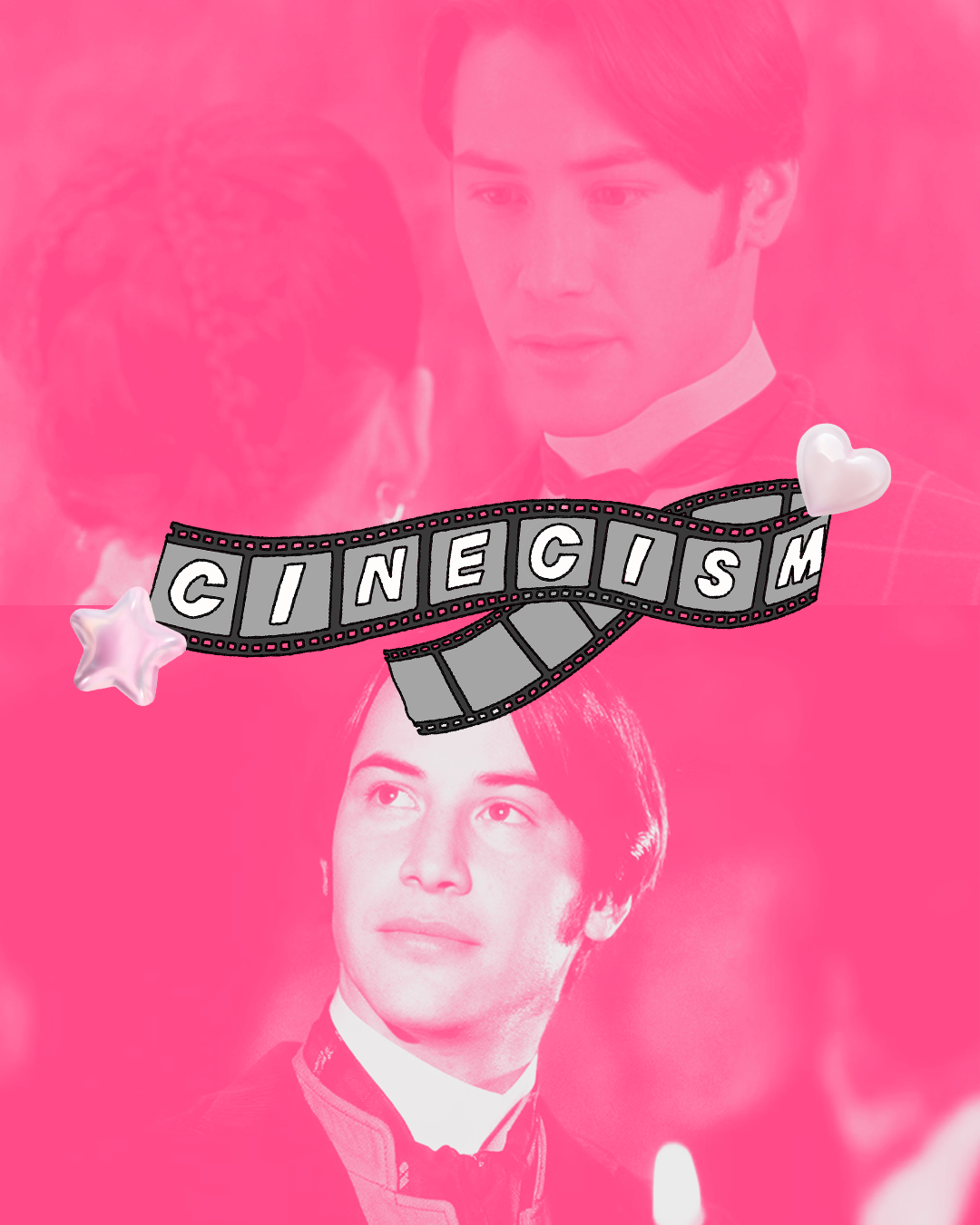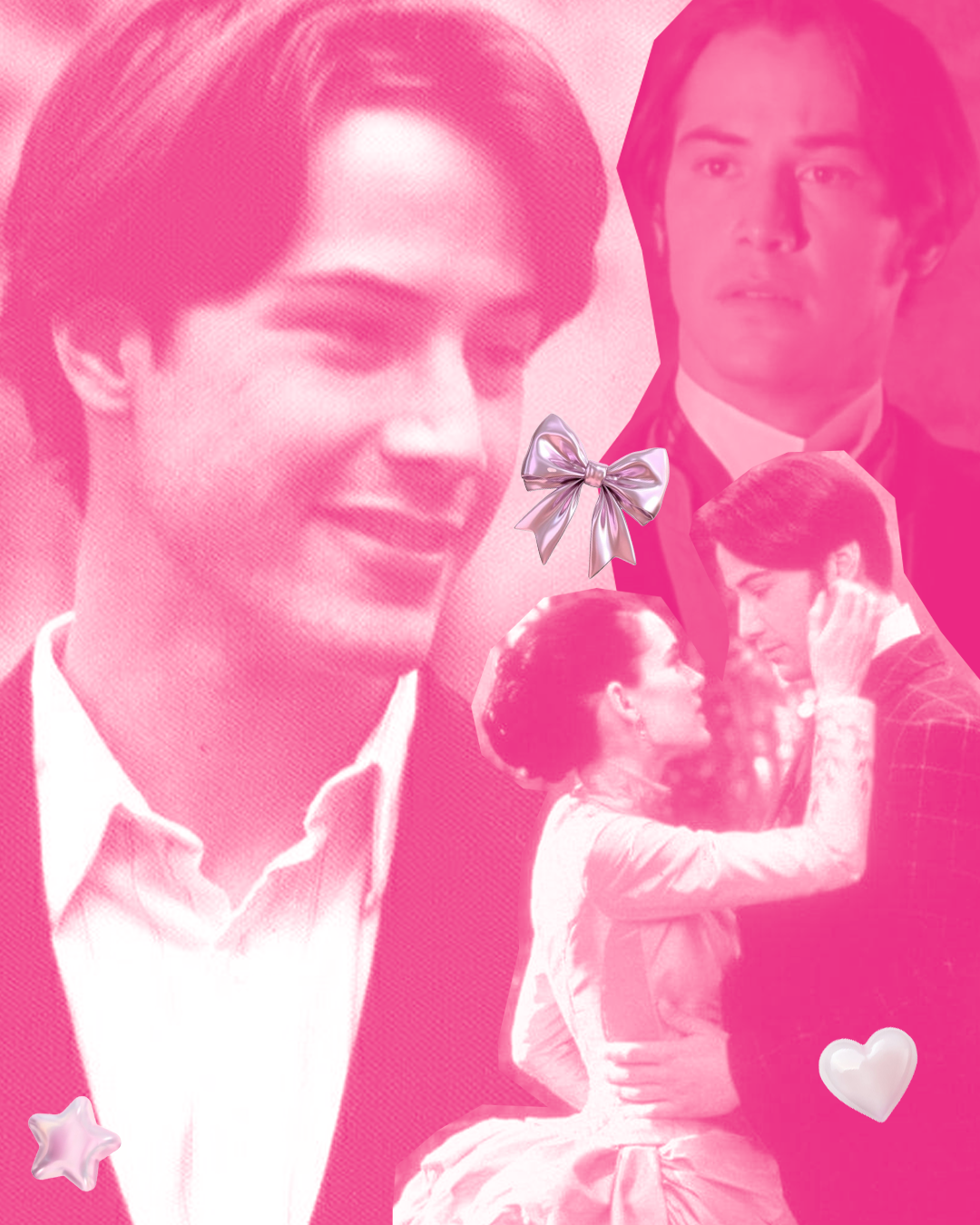Cinecism: Coppola’s Dracula, A Himbo in the Vampire’s Crypt
Words: Maia Wyman
Cinecism is our monthly film column from our culture critic Maia Wyman, also known as Broey Deschanel. You can read our interview with her here.
From Murnau to Herzog, adapting Bram Stoker’s gothic classic Dracula has been a rite of passage for filmmakers since film immemorial. Last year Robert Eggers made this already dark story even darker with an impressive Lily Rose Depp as his star and, already, Luc Besson’s take awaits an international release only a year later. But no rendition of this spooky tale has satiated my cravings more than Francis Ford Coppola’s 1992 epic, Bram Stoker’s Dracula.
With what Vincent Canby described as the “enthusiasm of a precocious school boy,” Coppola throws everything he’s got at this movie. Its art direction is magnificent in scale with nods to German expressionism. Coppola places his actors in large manufactured sets, films them from disorienting dutch angles and casts them in startling, satanic hues of red and orange. The costumes, dreamed up by the legendary Eiko Ishioka, are not entirely period-accurate, not entirely anachronistic, but move with a sensuality in their intricate ornamentation and voluptuous silhouettes. Even the human Dracula possesses a mythical garb, adorned in a suit of armour with catlike (or perhaps devil-like) horns. Michael Ballhaus’s camera swoops and soars through piles of festering rats just as sensuously as it languishes in absinthe-induced hallucinations of blood and fire. The result is a feast for the eyes and ears, with so much delicious excess as to distract critics from its narrative inconsistencies.
At the centre of this utterly decadent gothic epic, however, is a moon-faced Keanu Reeves, who arrives on screen with an expression so vacant it's as if he was plucked straight off the set of Bill and Ted. The late 80s and early 90s were a very stacked period for Reeves’ career. From a rapidfire string of critical and box office hits, Reeves was cast by Coppola in the role of Jonathan Harker only after Christian Slater declined. Coppola felt compelled towards Reeves in part for his being a “matinee idol” who could conjure the younger female demographic, and in part because of his winning personality. His acting abilities, however, did not seem to be a factor, and it shows. Whether pulling his love Mina into a teary embrace or fighting off the advances of three cannibalistic vampire women, the expression on Reeves’ face, a rather depthless one, remains the same. Worse is his line delivery, which, stunted by his struggle to exact an English accent, seems so difficult for the actor as to make uttering a simple sentence appear genuinely painful. Critics at the time were ruthless. Many found his casting to be an “improbable” mistake, and the scrutiny has only gotten harsher since.
Given that two adaptations have been released in the past year alone, it’s clear that the themes of Stoker’s story are just as prescient as ever. Yet Coppola’s remains my favourite of the adaptations thus far not in spite, but because of Reeves’ much maligned performance.
“For me, this is where the (likely unintentional) brilliance of Reeves comes through. Were it not for his striking dullness, performances like Ryder’s and Frost’s could not shine.”
What are the themes of this story? Well there’s Eastern exoticism and fears of the Other – which Coppola leans into somewhat with his rather eccentric depiction of medieval Romania, but perhaps not as heavily as Eggers does in having his version of Harker spend a night among a group of Romani people and using their customs to highlight Harker’s tight-upper-lip sensibility. There’s sexual contagion which, again, Coppola does not embrace as readily as Herzog or Murnau. While most adaptations, including Coppola’s, have Dracula spreading an invisible terror throughout Mina’s town, Coppola uses hallucinatory images of red blood cells in what was widely speculated to be a reference to AIDS, which was still ravaging the U.S when this film was made. Confronted by a swarm of rats, Ryder’s Mina literally yells out the word, “unclean!” But the other Draculas are much more sexually fluid in nature than Oldman’s – their targets know no gender. Perhaps Coppola’s less bisexual Dracula was an attempt to spare the queer community from further victimisation and stigma given the references to AIDS.
What Coppola does lean into fully is the theme of unbridled female sexuality. Bram Stoker, whose wife allegedly stopped sleeping with him after the birth of their child, and who reportedly died of syphilis, is thought by scholars to be using Dracula as a project to air his complicated relationship to women. Literature scholar Carol A. Senf argued back in 1986 that Dracula was a response to the emergence of the New Woman, a late 19th century pre-Sufferage evolution that saw women riding bicycles, wearing bloomers, and seeking financial independence as well as sexual equality in the bedroom. According to Senf, the vampire as imagined by Stoker is terrifying in its likeness to the New Woman for its ability to defy society’s restrictions and impart its brazen and untamed sexuality upon all who meet it. Much of this is displaced onto Mina’s friend Lucy, whose frustrations with her role in Victorian society make her easily seduced by Dracula and thus transformed into a vampire herself, only to meet a bloody end.
This “conflict between social conformity and individual desire,” as Senf puts it, is quite present in Coppola’s movie. There are many explicit references to sex, the most obvious of which has Lucy, played by Sadie Liza Frost, showing the repressed Mina some pornographic illustrations from a copy of Arabian Nights. Nudity also makes an unprecedented appearance here with the toplessness of not one, but all three of Dracula’s wives (there is even a very detailed closeup of one wife licking Reeves’ nipple). In a later scene, Dracula in human form literally takes Mina to what looks to be a porn theatre. Adding to these many references are some rather bombastic performances by the young female actresses. Especially Frost who, despite being a novice among Greats, manages to steal the show with her wild eyes, inhumanly writhing body, and honey-like voice.
For me, this is where the (likely unintentional) brilliance of Reeves comes through. Were it not for his striking dullness, performances like Ryder’s and Frost’s could not shine. Where Eggers needs an entire layover at a Romani village to bring out Harker’s stiffness, Reeves simply does so with his face. His vacancy is a Victorian valve, receiving all the uncontained, “hysterical sexuality” of the women around him, quite literally bewildered into expressionless constipation and, knowing his days as the dominant are numbered, too stunned to do much else.
Ultimately, Bram Stoker’s Dracula is less well regarded than its peers, much in thanks to Reeves’ wooden performance. But for me it contains a bygone decadence that’s due largely to Coppola’s insistence on using practical effects, which bear the marks of the labour that went into them, and actors who may not have been up for the task, but whose efforts should count in time. As Coppola said of Reeves years later, “he's a prince in my eyes.”


